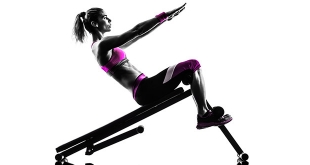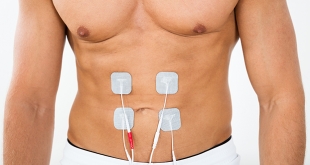The treadmill is one of the most popular exercise machines around, offering a good cardiovascular workout that blasts fat away and helps you drop those unwanted pounds and sculpt a lean physique. Unfortunately, it is not immune to plateaus, so it’s not surprising that many find themselves stuck in the same level and no longer getting the results they once had. Fortunately, there is a way to boost your treadmill workout and that’s through HIIT.
What is HIIT?
HIIT, or high intensity interval training, targets fast-twitch muscle fibers that are made to provide short but powerful energy bursts. These muscle fibers need a lot more fuel than their slow-twitch counterparts (used in steady-state cardio that promotes endurance) so you’re looking at burning off more calories during and after training if your workout focuses on fast-twitch fibers from the start. Depending on your fitness level, the after-workout burn that HIIT produces can last for several hours.
HIIT treadmill workout tips:
- Choose a setting that’s challenging for you. You can reach a plateau if your workouts are no longer challenging enough for your body. By simply choosing a setting that you’re not used to, you’re challenging your body already, making it work harder to produce satisfactory fitness results. Typically, a challenging setting is one that you can’t sustain for over a minute. However, while you want your body to work harder, you also have to be mindful about overdoing it to lessen risks of injuring yourself.
- Keep recovery intervals short. Ideally, you should be ready to go again after at most two minutes of rest. However, a recovery interval for an HIIT treadmill workout doesn’t necessarily mean you’ll stop; rather, you just switch to an “easy” mode to allow you to catch your breath and recharge though your heart may still be racing a bit.
- Make use of the Borg RPE scale. His Rate of Perceived Exertion scale ranges from 6 to 20. Six is very, very easy and 20 is difficult to the point that you can’t withstand that effort a full minute.
| How you might describe your exertion | Borg rating of your exertion | Examples (for most adults <65 years old) |
|---|---|---|
| None | 6 | Reading a book, watching television |
| Very, very light | 7 to 8 | Tying shoes |
| Very light | 9 to 10 | Chores like folding clothes that seem to take little effort |
| Fairly light | 11 to 12 | Walking through the grocery store or other activities that require some effort but not enough to speed up your breathing |
| Somewhat hard | 13 to 14 | Brisk walking or other activities that require moderate effort and speed your heart rate and breathing but don't make you out of breath |
| Hard | 15 to 16 | Bicycling, swimming, or other activities that take vigorous effort and get the heart pounding and make breathing very fast |
| Very hard | 17 to 18 | The highest level of activity you can sustain |
| Very, very hard | 19 to 20 | A finishing kick in a race or other burst of activity that you can't maintain for long |
Source: http://www.hsph.harvard.edu/nutritionsource/borg-scale/
- Do between five and eight cycles. One cycle includes one workout interval and a recovery interval. Aim for at least five of these but not more than eight so you don’t overdo it. Don’t forget to do your warm-ups! Warming up should be at a level several times below your maximum, a point that’s just enough to get your heart rate up but not to the extent that you’d be sweating a lot and start having trouble breathing.
Sample HIIT treadmill workouts:
You can tailor HIIT treadmill workouts to your own preferences, but you should start following these simple steps:
- Warm up – walk 2-3 minutes as fast as you can, but aim the speed that won’t make you sweat.
- Warm up – jog for 2-3 minutes at the speed that you could maintain for a long time.
- Sprint for 30 seconds to 2 minutes, or even more if you can.
- Take 2-3 minutes to rest by jogging as before.
- Repeat the cycle for up to seven more times.
If this sample HIIT treadmill workout isn’t challenging enough for you, you can increase the speed, extend running intervals or even increase incline of the treadmill.
 Best Home Gym Reviews and Tips for Your Home Gym
Best Home Gym Reviews and Tips for Your Home Gym






